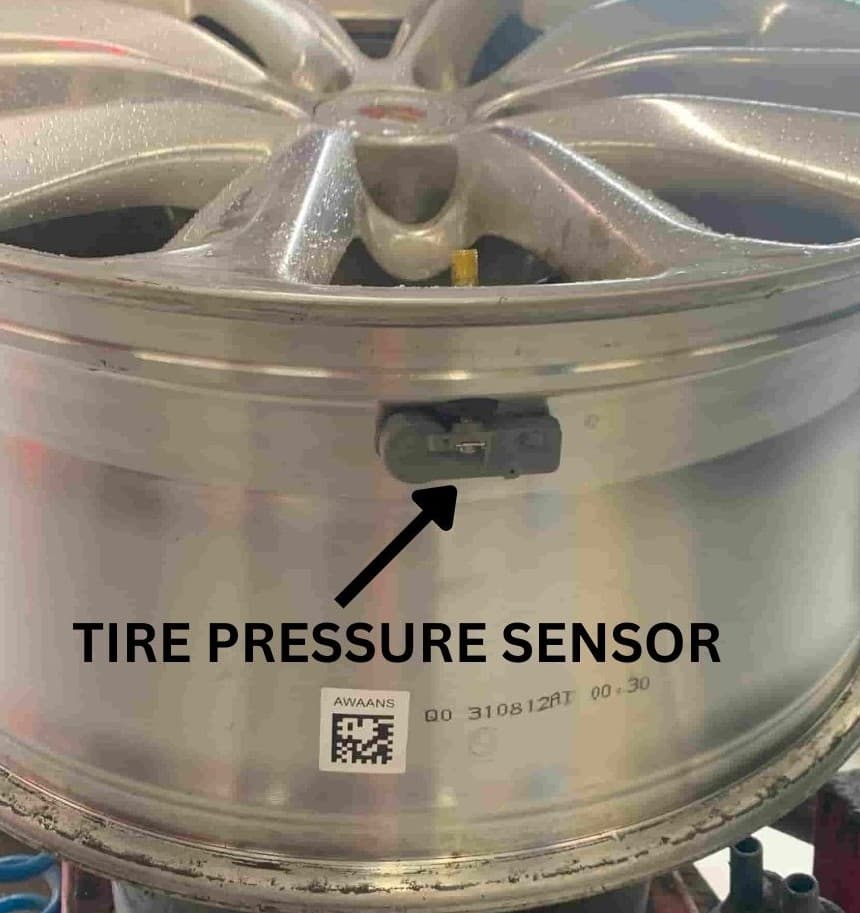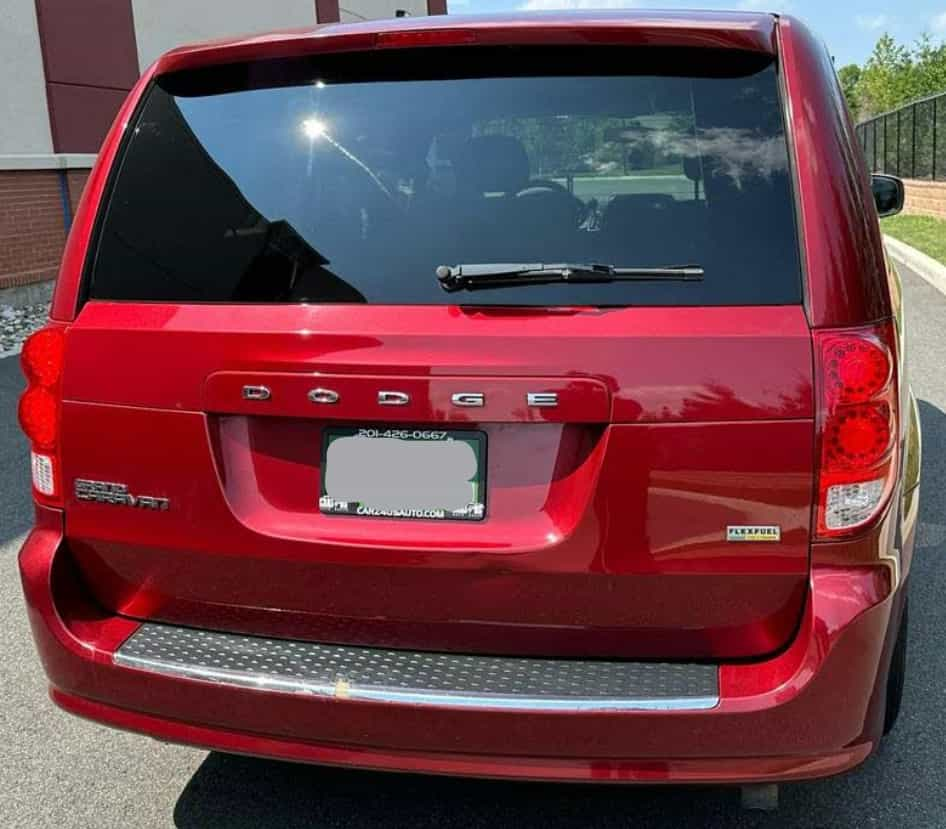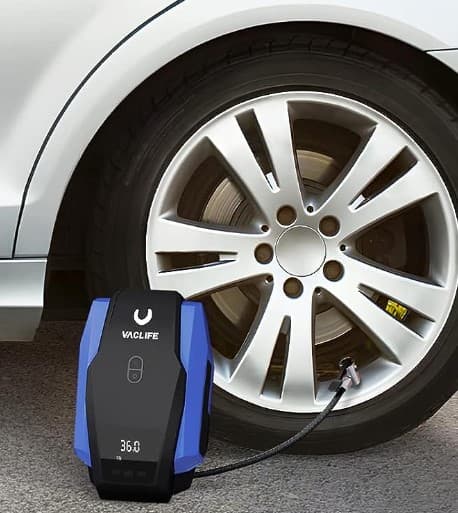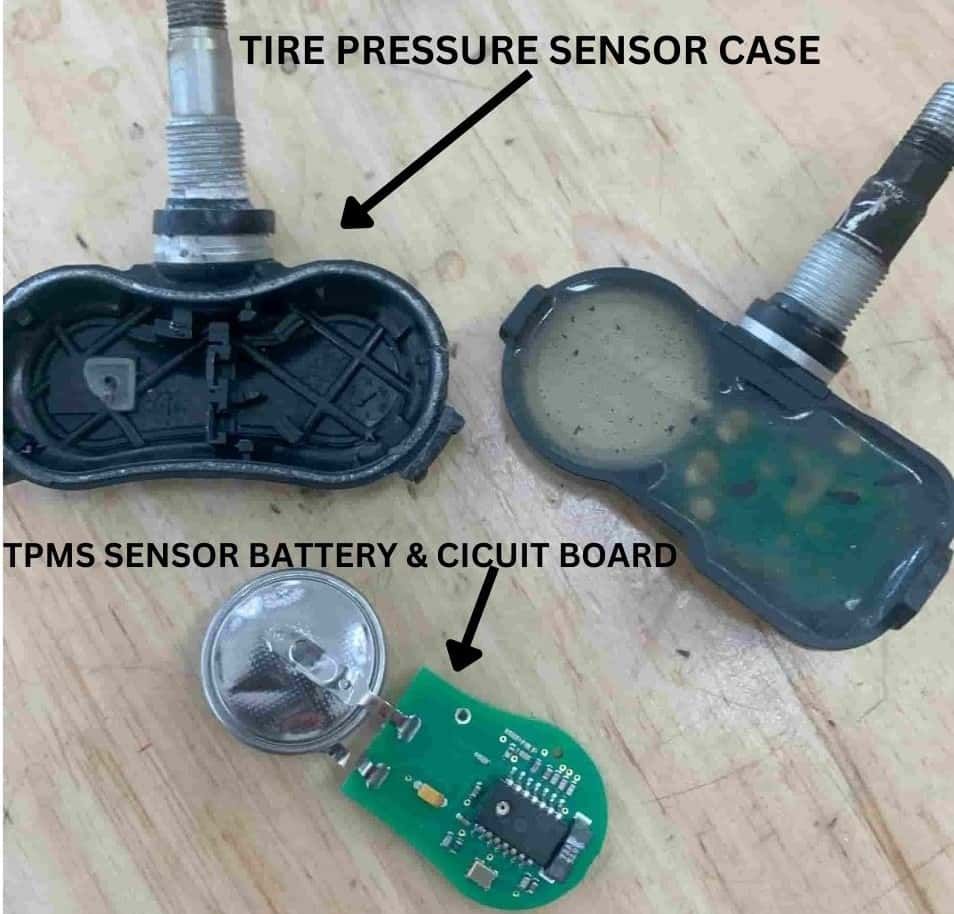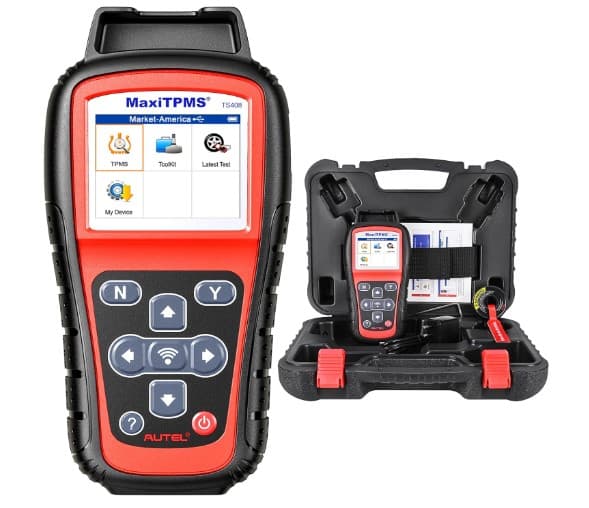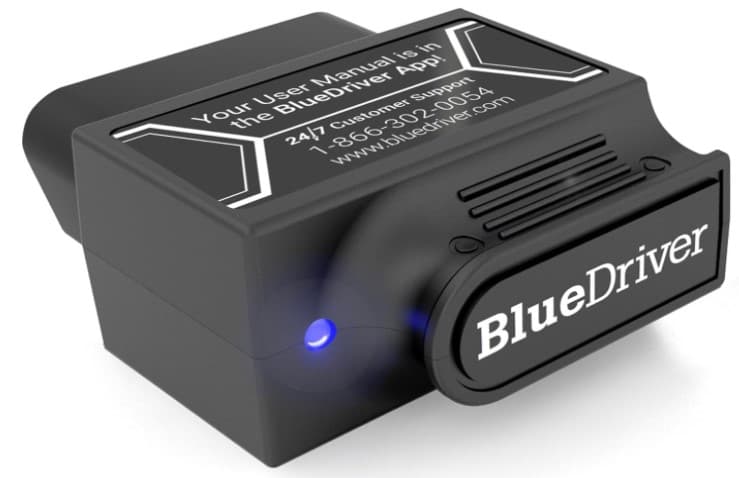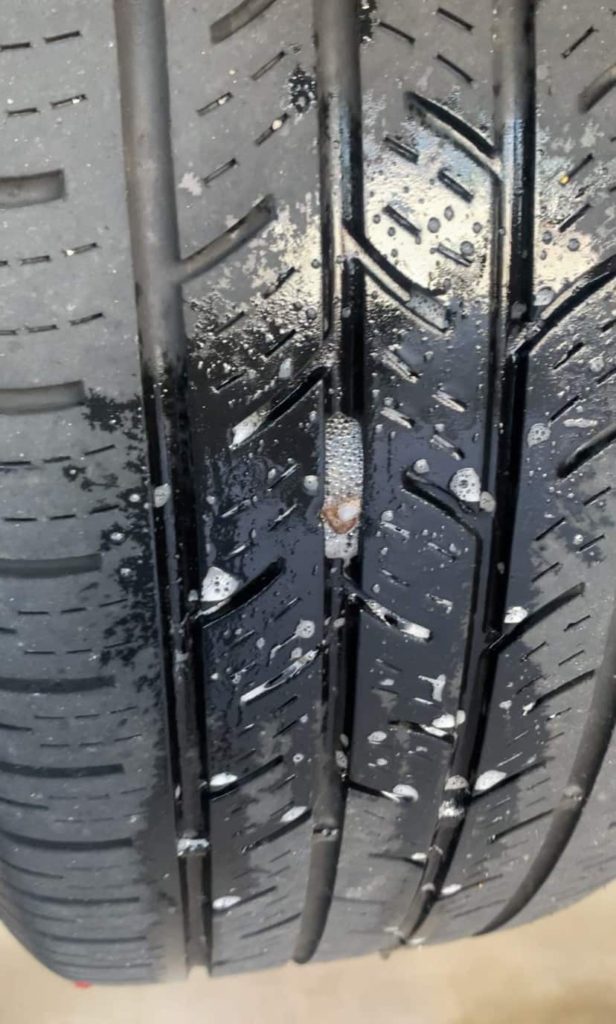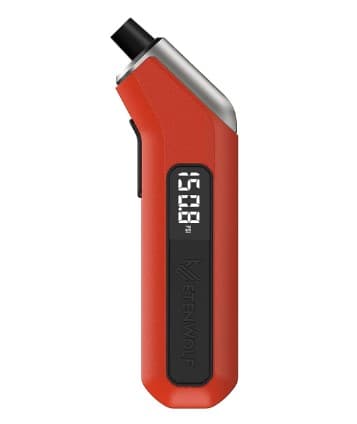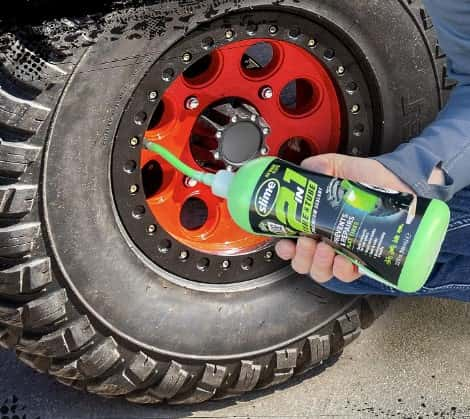What is the Dodge Grand Caravan TPMS?
While the Dodge Grand Caravan low tire pressure indicator might feel like a nuisance, it’s crucial for ensuring road safety. The Dodge Grand Caravan’s TPMS (tire pressure monitoring system) consists of four main components that collaboratively notify the driver about any discrepancies in tire air pressure: the Tire Pressure Sensors, TPMS receiver module, ECM, and the low air pressure warning notification.
How Does the Dodge Grand Caravan TPMS Work?
Tire Pressure Sensors: Positioned within each Grand Caravan tire, these sensors are attached to the valve stem’s base. They continually track the tire’s air pressure and temperature.
Wireless Data Transmission: Using radio waves (either 315 Mhz or 433 Mhz), these sensors relay real-time data concerning pressure and temperature to the Dodge Grand Caravan internal computer system.
TPMS Receiver Module’s Role: This ‘listener’ module grabs the transmitted data, processes it, and sends it onward to the Dodge Caravan’s primary computer – the ECM.
Dodge Grand Caravan ECM: Acting as the mini van’s brain, the ECM takes in the data and assesses it against the Caravan’s set standards for tire pressure set by Dodge.
Alerts for Low Pressure: Any decline in pressure below the safety benchmark will activate a dashboard light and audible signal. The dashboard light is a yellow exclamation point.
System’s Self Diagnostic Function: The TPMS’s self-check ensures its operational integrity. Any malfunction within the system will prompt a flashing low tire pressure alert on the Dodge Caravan’s dashboard.
How to Reset the Dodge Grand Caravan TPMS
Ensure the Dodge Grand Caravan tires are cold either by checking before you drive or letting them sit for 3 hours post-driving.
Precisely set the tire pressures to the suggested values when the tires are cold.
Operate the Dodge Ram for roughly 20 minutes, maintaining speeds over 15 mph.
Note: The Dodge Grand Caravan Does Not Have a Tire Pressure Reset Button!
How to Deactivate the Dodge Grand Caravan TPMS
To turn off the Dodge Grand Caravan’s tire pressure monitoring, switch out all four wheels with ones without built-in pressure sensors. Once deactivated, the information screen will show dashes (~) instead of tire pressure readings. Follow these steps to deactivate your Dodge Caravan tire pressure system:
Install four wheel-tire sets without TPMS sensors.
Operate the Dodge Grand Caravan for a minimum of 20 minutes while going faster than 15 Mph(24 km/h).
Upon deactivation, expect the tire pressure system to chime, and its warning light to blink for 75 seconds before staying illuminated.
Next time you start up the van, the TPMS will neither sound nor show blinking alerts.
Post-deactivation, tire pressure readings on the display will change to dashes (~) and the tire light will stop blinking.
How to Reactivate the Dodge Grand Caravan TPMS
Reinstall the Dodge Grand Caravan original wheels and tires equipped with TPMS sensors.
Operate the Dodge Grand Caravan for a duration of 20 minutes.
Cycle the engine on and off.
2020 Dodge Grand CAravan Tire Pressure
TIRE SIZE | FRONT PSI | REAR PSI |
225/65R17 | 36 | 36 |
Reasons the Dodge Grand Caravan's Tire Pressure Warning Light Activates
Incorrect tire pressure levels (under or over the recommended limit)
Tires losing air
Missing pressure sensors in tires
Aged or malfunctioning TPMS sensor battery
Problems linked to the TPMS receiver or vehicle’s ECM
External electromagnetic interferences from other cars or electronics
Variations in climate or elevation affecting pressure
Overloading beyond the Grand Caravans weight limit
The addition of chains to tires
Over-tinting of vehicle windows
Variable temperatures of the driving surface
Damaged or pierced tires
Mismatched tire sizes
Misaligned tires
Faulty TPMS software
Trauma to tires from accidents or rough terrains
Neglecting TPMS reset after changing or servicing tires
Compromised tire valve stem
Dodge Grand Caravan Tire Pressure Sensor Batteries
Dodge Grand Caravan tire pressure sensors are made up of a circuit board, antenna, and a non-rechargeable battery. When the battery is drained, the sensor must be replaced. On average, Dodge Grand Caravan sensor batteries work for up to 10 years or up to 150,000 miles.
Troubleshooting TPMS Problems in the Dodge Grand Caravan
Given that the Dodge Grand Caravan lacks a dedicated button to reset tire pressure, resolving the low tire pressure indicator might require a bit of trial and error. One of the subsequent methods should assist in deactivating the Grand Caravan tire pressure alert:
SOLUTION 1: COULD YOUR TIRE HAVE AN AIR LEAK?
When one of your tires appears deflated compared to the others, it’s often a sign of a potential leak. To verify, follow these steps:
Examine the tire visually and inflate it to the suggested cold pressure level.
Drive the Dodge Grand Caravan, maintaining speeds over 15 mph until the TPMS indicator extinguishes.
🎯WHAT THIS MEANS: Should all tire pressure sensors function optimally and each tire holds the proper air volume, the pressure warning should deactivate once the van is in motion. However, if the light goes out and later reactivates during a drive or after a parked interval, this typically indicates a leaking tire.
SOLUTION 2: HOW TO RESET THE COMPUTER OF YOUR DODGE GRAND CARAVAN
The Dodge Grand Caravan computer logs each instance of the low tire pressure warning. To clear this log and switch off the tire warning light, you’ll need to reset the Grand Caravan’s computer. Here’s how:
Ensure the engine is off and all power sources are off.
Detach the negative terminal from the Grand Caravan’s primary 12 Volt battery.
Pause for roughly a minute, then reattach and secure the negative terminal to the battery.
Take the Dodge Grand Caravan for a drive, lasting around 30 minutes.
🎯 WHAT THIS MEANS: Undertaking these steps should deactivate the tire warning. If the alert re-emerges post-drive, it indicates a tire may be deflating due to a leak or there is a malfunction with a TPMS sensor.
SOLUTION 3: PINPOINTING TIRE PRESSURE SENSOR ISSUES WITH A DIAGNOSTIC TOOL
To examine each TPMS sensor on a Dodge Grand Caravan, you’ll require either a TPMS programming device or an OBD2 diagnostic tool. The TPMS programming device lets you assess each tire’s pressure sensor separately. Meanwhile, the OBD2 diagnostic tool informs you of any TPMS-related errors and pinpoints which tire isn’t communicating correctly. When utilizing a TPMS programming device:
Attach the device to the Dodge Grand Caravan’s system by connecting it to the van’s OBD2 port.
Adhere to the device’s guidelines and initiate the test of each TPMS sensor by positioning the device adjacent to each tire’s valve stem.
🎯WHAT IT MEANS: After evaluating every tire pressure sensor, the TPMS programming device will disclose its observations about each one. If the device cannot establish a connection to a sensor, indicates a depleting battery, or showcases anomalous data (e.g., tire temperature reads -118 degrees), then the corresponding Dodge Grand Caravan tire pressure sensor ought to be substituted with a new one.
SOLUTION 4: WAKING UP A TPMS SENSOR FROM INACTIVITY
To reactivate a non-responsive tire pressure sensor (one with sufficient battery but not functioning correctly), adhere to the following instructions:
Reduce the tire pressure of the problematic tire by about 15-20 Psi.
Pump up the same tire to 41 Psi (5 Psi more than the advised level).
Drive Dodge Grand Caravan for 15 minutes.
After parking, reset the tire pressure to its optimal 36 Psi.
🎯WHAT IT MEANS: If the regular Dodge Grand Caravan tire pressure resetting method fails, consider this alternative.
SOLUTION 5: THE INFLUENCE OF TEMPERATURE ON TIRE PRESSURE
Temperature plays a significant role in affecting tire pressure. Both the surrounding air temperature and the immediate temperature of the tire can have a marked impact on its pressure. For a shift of 12 degrees in air temperature, there’s an approximate change of 1-2 Psi in tire pressure. Take this for instance: if there’s a 35-degree drop in temperature overnight, the air pressure in the Dodge Grand Caravan tires could lessen by around 3.5 Psi, possibly activating the low tire pressure warning. The act of driving also alters the tire’s internal pressure. As the tires get warmer during a drive, their pressure rises. Hence, it’s crucial to adjust the tire pressures only when they are in a cold state, without having been recently driven on. Understanding these temperature-related dynamics makes it evident that the Dodge Grand Caravan tire pressure indicator can activate even in the absence of a puncture.
🎯WHAT IT MEANS: Due to temperature fluctuations, tire pressure variations are a given. The best approach to manage this is to adjust the Dodge Grand Caravan tire pressures when they’re cold. We recommend doing this early in the morning before driving or if the van has been driven less than a mile. Typically, tires take about 3 hours post-parking to achieve a “cold” condition.
SOLUTION 6: USING SOAPY WATER TO DETECT TIRE LEAKS
If, after exploring the earlier 5 solutions, you ascertain that there’s a leak in your tire, here’s the method to locate it:
Essentials: Soap or liquid detergent, a sprayer bottle, water, and a device to inflate tires.
Combine soap with water in the sprayer bottle.
Fill the potentially leaking tire to a pressure of 36 Psi.
Douse the entire tire with the soapy water mixture.
Observe the Dodge Grand Caravan tire for any emerging tiny air bubbles.
🎯WHAT IT MEANS: The formation of air bubbles will guide you to the leak’s exact source.
DODGE GRAND CARAVAN TIRE PRESSURE QUESTIONS
OPTIONS FOR TIRE PRESSURE SENSORS WHEN CHANGING DODGE GRAND CARAVAN WHEELS OR TIRES
Should you change out the tires on your Dodge Grand Caravan, ensure you follow the standard TPMS reset process. When replacing the Dodge Grand Caravan wheels, you can either transfer the original tire pressure sensors to the new wheels or acquire a fresh set of sensors and program them to the TPMS receiver module.
HOW TIRES REACT TO CHANGES IN ALTITUDE
Elevation changes can have a distinct impact on the tire pressure of a Dodge Grand Caravan. Specifically, for every rise of 1,000 feet in altitude, there’s an approximate 0.5 psi decrease in atmospheric pressure. This change causes the tires to have a relative internal pressure increase. So, if a Dodge Grand Caravan were to journey from a coastline to a location 4,000 feet above sea level, the tires could witness an effective pressure surge of around 2.0 psi, regardless of any temperature shifts.
IS IT SAFE TO DRIVE THE DODGE GRAND CARAVAN WITH THE LOW TIRE LIGHT ON?
No, operating the Dodge Grand Caravan with the low tire pressure indicator active is not recommended. When this alert is illuminated, it’s crucial to safely pull over and evaluate the condition of the tires. Conduct a visual examination and measure the air pressure manually. Driving on under-inflated tires can jeopardize the safety of both the vehicle’s occupants and the van’s overall performance. The Dodge Grand Caravan tire pressure alert illuminates due to two potential causes: either the tire pressure is not optimal or a tire pressure sensor is malfunctioning.
HOW FAR CAN YOU SAFELY DRIVE THE DODGE GRAND CARAVAN WHEN THE TIRE PRESSURE WARNING LIGHT IS ON?
The longer you continue driving unaware of the reason behind the activated tire pressure light, the greater the risk you face. There’s no specific distance or duration deemed safe or advisable when the low tire pressure light is illuminated. Upon seeing the warning, immediately ascertain whether the issue is due to a deflated tire or a malfunctioning tire pressure sensor. While navigating with a low tire pressure poses a direct threat, driving with a faulty tire pressure sensor doesn’t compromise the Grand Caravan’s safety, although it leaves you uninformed about the actual tire pressure on the display screen.
WHY IS THE DODGE GRAND CARAVAN TIRE LIGHT FLASHING?
The tire pressure monitoring system of the Dodge Grand Caravan incorporates a built-in self-check function. If the system is unable to establish a connection with a tire pressure sensor, this self-checking mechanism activates, leading to what is termed a TPMS malfunction. In such instances, the low tire pressure alert will briefly flash for approximately a minute before remaining steadily lit. To illustrate, the spare tire of the Dodge Grand Caravan lacks an internal tire pressure sensor. Therefore, when you’re driving using the spare the TPMS can’t interact with it because it’s absent, resulting in a TPMS malfunction. Similarly, a depleted or nonfunctional sensor battery can trigger a TPMS malfunction.
THE EFFECTIVENESS OF TIRE PLUGS FOR PUNCTURES
While tire plugs work effectively in fixing tire punctures, they shouldn’t be applied to tires with significantly worn treads or to the tire’s sidewall.
POTENTIAL DANGERS OF USING TIRE SEALANTS
Employing tire sealants like Slime or Fix-a-Flat might harm the electronic components of a tire pressure sensor. If you opt to use such sealants, it’s wise to take your van to a mechanic who can clean the sensor and assess its operation.
Everything in this article is applicable to all Dodge Grand Caravan models and versions including all Dodge Caravan’s made between 2008-2020.
Please note that this blog post contains Amazon affiliate links. This means that if you make a purchase through one of these links, we at TPMSRESET.COM may earn a small commission at no extra cost to you. We only recommend products that we personally use and believe in. Thank you for supporting us.

